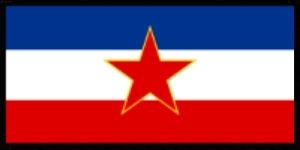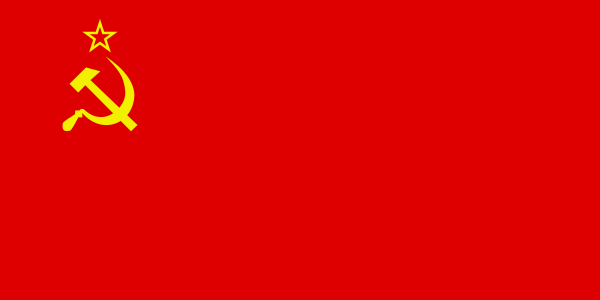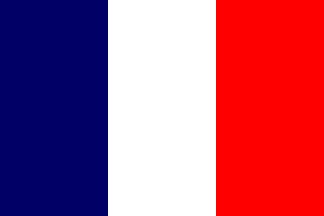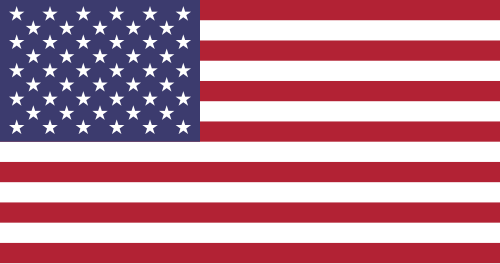Events of the World: 1955
Europe
In Britain Independent TV (ITV) is set up as a competitor to the BBC Television Service. The new public broadcaster arrives on the scene just as television is gaining popularity in Europe. Unlike the BBC ITV broadcasts more entertainment programs and is quickly gaining popularity in Britain and in Ireland.
The 1955 general election in the United Kingdom is noted primarily for the retirement of Winston Churchill and his replacement with Anthony Eden as leader of the Conservative Party. The infighting in the Labour Party between the leftist and moderate elements along with the stale message of Clement Attlee (he was fighting his fifth election) meant that Labour was unable to offer the Conservatives a serious challenge, and the Conservatives secured a comfortable majority with 350 seats in the Commons.
Across the Channel in France the instability in the colonies and political gridlock at home prompt leaders from different parties to try to negotiate changes to the Constitution of the Fourth Republic. Most agreed on the need to strengthen the executive branch, although details proved elusive. Negotiations continued for most of 1955 with no result yet.
West German individuals and organizations pour money into pro-unification political parties in Saarland. The Saarland Minister-President Johannes Hoffmann resigns in protest of such interference with the newly independent state. The West Germans take this as a sign of surrender, bullying and threatening the Saarland Council into appointing Heinrich von Brentano, the West German Foreign Minister, as the new Minister-President, essentially ending Saarland sovereignty.
With the situation in Saarland as a backdrop West Germany begins to re-arm, creating six new infantry divisions despite furious objections from pro-independence Saarland politicians.
In East Germany the heavy industry that is returned by the Soviet Union is put to use. This appears to be the first step in a process that is meant to reorient the country’s economy towards heavy industry.
The expansion of “communes” from the agricultural sector to all small and medium businesses in East Germany puts an end to the centrally planned economy in the country. These smaller enterprises will be run by the workers themselves with only limited direction from the government. It is notable that the media also falls in this category and as a result the government’s control over the media is loosened substantially.
Czechoslovakia begins an upgrade of its army equipment and a reform of the training regimen for its soldiers. The upgrade is minor, since the Czech army is nearly up-to-date given the technology available in Czechoslovakia. The future will show how effective the training changes are.
There is a major push to build more roads and heavy railways in the industrial parts of Czechoslovakia. There are worries that the additional expense and the higher taxes needed to finance it will be detrimental to the economy, although for the moment things appear to be just fine in Czechoslovakia.
The education reform started the previous year in Czechoslovakia bears significant results. The biggest change is the proliferation of academics who work in the natural sciences and who are not members of the Communist Party. Together with an influx of a significant amount of money these men and women are able to provide significant contributions to Czech higher education. [+2 to education quality, +1 technology]
Romania begins an overhaul of its education system. Schools at all levels will indoctrinate students regarding the benefits of Communism and the benevolence of the Romanian Communist Party and its leadership. While future generations will probably be good Communists it is likely that they will have a tenuous relationship with things such as “facts” and “truth.” [-1 education quality]
The Romanian army begins the development of an assault rifle based on the AK-47. Why a new rifle is necessary when it would be easy to simply build or buy the AK-47 is unclear, other than as a potential sign of Romanian grandstanding. Along with the new rifle the Romanian military begins work to improve the training of the army, although the goal appears to be primarily to show off Romanian military rather than improve its quality.
Largely due to the overbearing presence of the government in the economy of Yugoslavia and the lack of consumer goods and services the country enters a recession as the economy shrinks during 1955. The government’s response is to begin a reform of the education system, though the country cannot in all honesty afford one. The government expands the mining operations in the south of the country, hoping to make some money via resource exports, but these prove to be no more profitable than Yugoslav industry is. [more resources]
Work in the Soviet Union continues on a functional ballistic missile, although few details are known. There are reports of additional ground tests of the R-7 rocket at a facility designed as a testing ground for ballistic missiles.
The Soviet leadership appears unable to make up its mind regarding the direction of the Soviet economy. Just as the Virgin Lands Campaign is proving successful the leadership chooses to start a new campaign focusing on heavy industry and consumer goods. Workers are relocated from Kazakhstan to the industrial cities along the Urals and in Siberia. Equipment designed and produced for agricultural use is useless in the new industrialization drive and sits unused. [lower growth, less agriculture, more industry]
North and South America
The United States announces that it plans to develop missiles that are capable of carrying nuclear weapons. As part of the program the nuclear arsenal of the United States is again expanded significantly.
The Soviet Union begins to ship large amounts of weapons and to send training advisers to the July 26th Movement in Mexico. These activities are discovered by Mexican officials with the help of the CIA. A number of Soviet agents are detained and Mexico severs all diplomatic ties with the Soviet Union. This incident ends any hope of creating a “Popular Front” against the Batista rule as all non-Communist groups and organizations will not work with the Soviet-backed July 26th Movement.
Despite the Mexican incident it appears that the July 26th Movement has been able to either move agents to Cuba or to recruit agents there. The Batista regime begins a massive round of repressions, with waves of arrests of anyone who is even suspected of leftist leanings.
The waves of arrests alienate the remaining Batista supporters. On August 15th a popular army officer Ramon Barquin leads a group of officers in a coup against Batista. The President is captured quickly and after a tense two days all military units agree to accept the new leadership. Barquin has a better public persona than Batista, but it is unclear whether the new military government can bring about any real change on the island.
Brazil escapes its recession on the heels of the expansion of the National Motors Company. The subsidies and tariffs implemented the previous year make domestic cars the only affordable alternative for the upper class Brazilians. It is not clear if the NMC will be able to compete internationally without the protection of Brazil’s tariffs. [higher growth]
In yet another way to support the NMC the Brazilian government begins a program of road construction in the country. Given the size of Brazil and its large population this is a very, very expensive undertaking for a country that is not rich by international standards. However, it will pay off in the future if the infrastructure to support a large car-ownership culture is in place. [big boost if infrastructure is ever at Average]
Africa and the Middle East
The French government offers the Algerian and Moroccan nationalist movements independence in return for their participation in a “Mediterranean Union” wherein France would continue to hold control over foreign and fiscal policies. The offer is rejected outright and the Algerian Assembly declares the country independent in April and seeks international recognition.
French citizens in Algeria organize a paramilitary force to resist the FLN. Clashes erupt in many of the major towns in the country, with the FLN targeting French citizens, administrators, and colonial troops stationed in the country. Thousands die in the chaotic fighting over the course of the year as the French administration remains unsure of how to deal with the situation.
In neighboring Morocco protests turn violent despite the French offer of independence and association. The exiled Sultan Mohammed V refused the French offer and continues to demand that he be allowed to return to the country with no preconditions. Many French citizens have begun to flee North Africa in fear of escalating fighting, but many insist on staying and are preparing to fight the nationalist movements which are quickly becoming more radical in Morocco, Algeria, and Tunisia.
On top of a large expansion of government services the previous year the Egyptian government sets up a Bank of Agricultural Development. The primary goal is to provide loans to farmers for the purchase of agricultural equipment. The bank itself is clearly a good idea, although government spending is creeping up dangerously. [more agriculture, higher growth]
The creation of the Ministry of Small and Medium Enterprises in Egypt pays nearly immediate dividends. Although there are vocal protests about further government intrusion into the economy, the ministry is able to provide loans, education, and legal help, as well as gently “guide” smaller enterprises. [mixed economy, significantly higher growth]
With no American money forthcoming the Turks bite the bullet and begin construction on the Sea-to-Mountain Highway using their own money. The project is expensive, but probably worth it in the long term.
Turkey also begins some minor military reforms and modernization. The project is not expected to be particularly large as Turkish army is mostly up-to-date.
After a year marred with controversy over the Golan Heights land the Syrian economy shrinks in the first half of 1955. The government tries to put people to work by building schools and expanding funding for research. It is unclear how much help these plans are to the economy.
A more likely source of an economic boost is the discovery of oil in Deir ez Zoir Governorate. Foreign companies, including Shell, BP, Exxon-Mobil, Total, and Gulbekianj have begun drilling oil wells. This will be a boost to the Syrian economy, although a lot of the profits are likely to end up in the hands of the foreign companies. [more resources, more growth]
Despite mounting deficits the Israeli government begins a large-scale road construction program as part of its plans to solidify the control over the country. Deficits continue in the neighborhood of 15% of GDP and while this influx of foreign money keeps the economy afloat for now, soon enough the mounting debt will begin to pose problems.
Meanwhile the Israeli military reforms continue, including surveys of Israeli terrain and terrain of the countries that neighbor Israel.
Asia and Oceania
Poor harvest and the crisis in East Asia combine to send Pakistan and India into a recession during 1955. The actions of the Indian government do not help the situation, cuasing further instability in the region.
The Indian government opens 1955 with a purge of its intelligence services. Anyone who is suspected of harboring “non-leftist” sympathies is removed from service and imprisoned. The replacement operatives are unfamiliar with the situation and most are appointed for their political views rather than for skill. [no covert operations for India for the next 4 turns]
The Indian government then moves to undermine the Indian army, believing it to be supportive of an anti-government coup. The army is denied supplies, senior officers are removed from command, and the army is removed from all decision-making positions and is stripped of most communications and transport infrastructure. [-3 army quality, government changed to LWR]
Promotion of heavy industry in China is, at best, ineffective. There are few skilled engineers and fewer skilled administrators around. Production of agricultural equipment is set up in some areas, though the end result is more agricultural output rather than more industrial output. [a bit more industry, more agriculture]
Meanwhile “voluntary” collectivization of agriculture continues in rural areas. Centralized agricultural production with quotas and significant oversight leads to more agricultural production, but, as is typical in the situation, there is little initiative to improve collective lands. [more agriculture, slower growth]
The Taiwanese military government bans all public expression of support for Communism. There is not a lot of need to do so, as after the Chinese attempt to invade the island Communism is not exactly popular. Even those radical leftists who support Communist ideas are in general opposed to the idea of reunification with China under Chinese rule.
Still, the Taiwanese government arrests all members of the DPC and all supporters of the party. Those who voted for the party during the elections are targeted and imprisoned as are members of the more moderate Democratic Socialist Party. A state of emergency is declared and the military assumes all government powers. [no freedom on Taiwan]
As part of the ongoing series of infrastructure investment in Japan the government approves the construction of the first shinkansen, or bullet trains. Scheduled to be completed the following year the first line will be a test of how far the Japanese can push the bullet train idea.
Similarly the ongoing education reform in Japan is expanded with additional funding for universities and teaching hospitals. Taken altogether the new spending pushes the government deficit further, and the government ends 1955 having borrowed more than 3% of GDP to help finance the new projects.
The Democratic Republic of Viet Nam is proclaimed in Hanoi, although no Constitution is promulgated and in reality the Viet Minh and other Communist rebel groups continue to hold the power in the country.
In the south of the country neither the French nor the North Vietnamese want to take the initiative in assaulting the remaining South Vietnamese forces near Nha Trang. The French air force continues to fly missions against the South Vietnamese there, although without ground units to take advantage of the air attacks there is little progress. The South Vietnamese fortify the hills around the city, but the assault never comes. It is not clear how long the forces can hold out in the pocket, but for now they appear to have no difficulties.
Further south around Cochinchina the South Vietnamese forces are allowed to take control of the area and to move in and out of Cambodia as necessary. The Cambodian government protests these intrusions, although there is not much it is able to do to stop them.
In Malaysia the British campaign against the Communist insurgency ends abruptly. The Communist leader Chin Peng is killed in an air raid. The MNLA continues a small-scale guerrilla resistance, but it is disorganized and lacks popular support. British estimates suggest that by the end of the year there are less than 1,000 organized MNLA fighters left in the country.
The radically leftist government of Indonesia attempts to promote foreign investment in the country, with somewhat predictable results. Given the instability, lack of property rights, nationalized resource industry, and utter poverty in the country few foreign firms see anything of value there.
The construction of medical centers continues in Indonesia. Some open during 1955 but the majority remain under construction. Training programs for doctors begin in some areas, but again, progress is slow.
Other notable events
EOKA starts a terrorist campaign against British rule in the Crown colony of Cyprus.
Disneyland opens to the public in Anaheim, California.
The President of Argentina, Juan Peron, is ousted in a military coup.
In Montgomery, Alabama, Rosa Parks refuses to obey bus driver James F. Blake's order that she give up her seat to make room for a white passenger and is arrested, leading to the Montgomery bus boycott.
American cytogeneticist Joe Hin Tjio discovers the correct number of human chromosomes, forty-six.
General Motors Corporation becomes the first American corporation to make a profit of over one billion dollars in one year.















